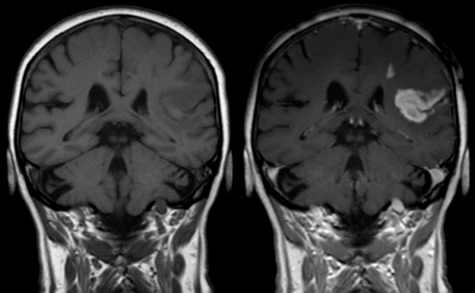
MRI with contrast is required when very detailed images for evaluating the problem are needed. A special tracer agent is injected into the vein of the patient during the MRI procedure. The decision whether to make an MRI with contrast depends on the type of the problem and also depends on the history of the given patient.
MRI without contrast is the usual MRI procedure which is done without the use of the contrast agent. The results of the MRI procedure are as valuable and relevant as those done with the use of a contrast agent.
Comparison chart
| MRI with contrast | MRI without contrast |
| No need for additional MRI scanning | May require additional MRI scanning |
| Good at measuring a tumor | Ineffective for measuring a tumor |
| Images are clearer and are easier to interpret | Images are less clear and may be hard to interpret |
MRI with Contrast vs MRI without Contrast
What is the difference between MRI with and without contrast? Let’s compare them by efficacy, the ability to evaluate tumors and the level of clarity.
- Usually, if an MRI procedure is done with the help of a contrast agent, there is no need for additional MRI procedures due to the higher resolution of the resulting scan. MRI without contrast may in some cases require additional MRI procedures to clarify the problem.
- In order to understand if treatment of the patient with a tumor is being performed properly, MRI with contrast is required. MRI without contrast cannot generally help in evaluating the given tumor condition.
- MRI images with contrast are clearer than the images of MRI without contrast. Due to the high clarity of images gathered by MRI with contrast, they are easier for a medical specialist to evaluate and interpret.
